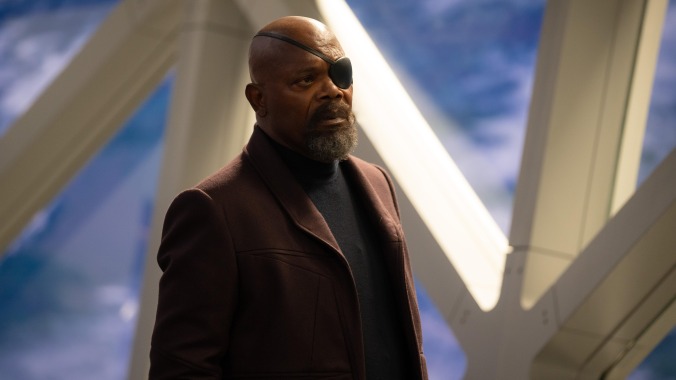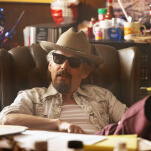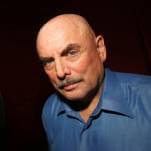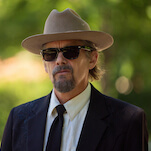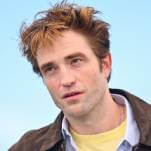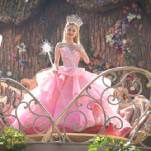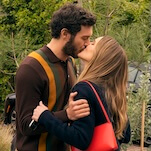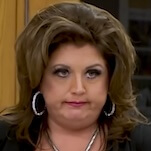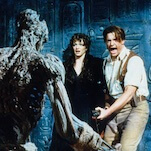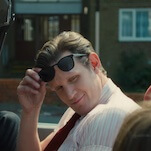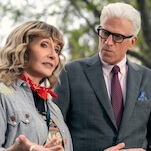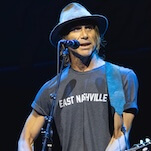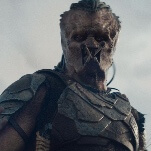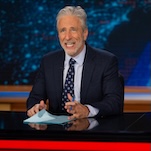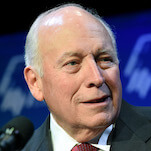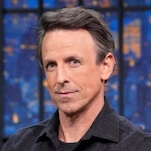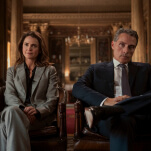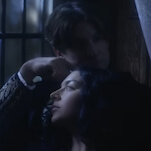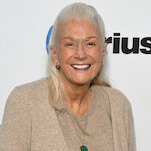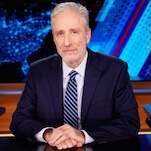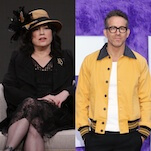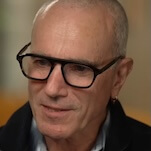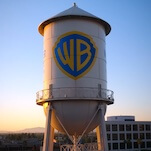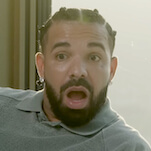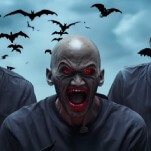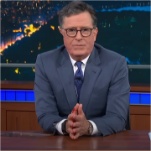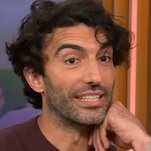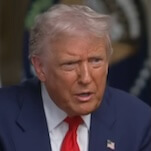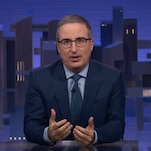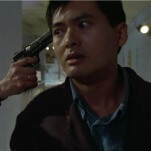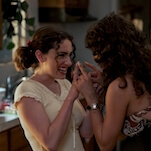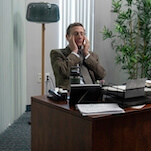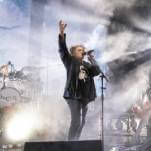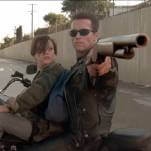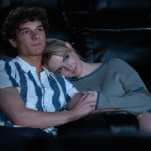Samuel L. Jackson as Nick Fury in The Marvels Photo: Laura Radford/Marvel Studios
For better or worse, a certain level of fluency in the ever-expanding tapestry of the Marvel Cinematic Universe is required by The Marvels. While the film—which brings together Captain Marvel’s Carol Danvers (Brie Larson), WandaVision’s Monica Rambeau (Teyonah Parris), and Ms. Marvel’s Kamala Khan (Iman Vellani)—fills in some blanks and provides certain answers, it also triggers plenty of questions.
Because even the most savvy fan might need help parsing all that information and processing those questions after seeing The Marvels, we’re here to shed light on the film’s cosmic Easter eggs and to break down the significance of certain characters and events. We’ve also got some educated guesses on what everything means to the big-picture future of the overall MCU. But be warned if you haven’t seen the film: spoilers will be flying higher, further, and faster.
About that new, powerful bangle
In the film’s opening sequence, we’re introduced to the matching counterpart to the bangle that came into Kamala Khan’s possession during the debut season of Ms. Marvel. The artifact previously belonged to Kamala’s grandmother; its origins—mystical or extraterrestrial—were unknown, but it held the key to helping Kamala unlock her inherent powers as well as tearing down the veil between the MCU and the Noor Dimension, home to the Clandestines and, presumably, causing Kamala’s light powers to become entangled with Carol’s and Monica’s.
In a nod to Captain Marvel comic book lore, the movie’s place-swapping plot device and the bangle’s connection to it are reminiscent of the period in which Mar-Vell, the original, male captain. When he was trapped in the harsh Negative Zone dimension, he was able to swap places with teenager Rick Jones—sidekick at various times to the Hulk, the Avengers, and Captain America—by clanging together Nega-Bands. By the way, this itself was a sly tip of the hat to the original original, non-Marvel Captain Marvel (the former Fawcett Comics, now-DC-owned hero who transformed from teen Billy Batson into a super-powered adult by uttering the magic word “Shazam!”).
As the film’s story unfolds it’s revealed that the pair of bangles are, in fact, Quantum Bands, powerful ancient cosmic artifacts that give the wearer incredible energy powers. In the comics, the Quantum Bands have passed through many hands, with the bearers often taking up the altruistic mantle of Protector of the Universe. Mar-Vell was briefly among the band’s possessors, but they’ve most famously been used by the superhero Quasar, a.k.a. Wendell Vaughn, later an Avenger, as well as the Quasar name and mission, and were eventually taken up by Mar-Vell’s daughter Phyla-Vell, who herself had been called Captain Marvel for a while.
Why is all this intriguing? Wendell Vaughn hasn’t been introduced in the Marvel Cinematic Universe (yet), but Guardians Of The Galaxy Vol. 3 brought in Phyla, the precocious young girl among the Star Children who joined Rocket’s new incarnation of the Guardians. Are the Quantum Bonds ultimately going to end up on Phyla’s wrists as she becomes the MCU’s Quasar?
The Dar-Benn backstory
The Marvels’ big bad, Dar-Benn, also has a comic book antecedent, but mercifully it’s a less complex history. Gender-swapped into a female character for the film, Dar-Benn was originally a less colorful antagonist, as co-leader of the Kree Empire in the much-admired early 1990s Avengers storyline “Operation Galactic Storm.” In that storyline, Monica Rambeau, then known as Captain Marvel, was on the team roster along with Quasar/Wendell Vaughn, while former member Carol Danvers—in her post-Cap guise as Binary (more on that later)— pitched in as well.
Dar-Benn wields a hammer-like Universal Weapon, as did Ronan the Accuser, the Kree villain of the first Guardians Of The Galaxy film. The weapon is believed to be roughly equal in power to Thor’s Asgardian hammer Mjolnir, minus the worthiness needed to heft it. Ronan also amped his weapon up exponentially with the addition of the Power Stone, one of the fabled Infinity Stones claimed by Thanos. Dar-Benn doesn’t have the advantage of the Power Stone upgrade, but her Universal Weapon is still brimming with plenty of potent purple energy, this time given a goose by the power of her Quantum Band. And the distinctive design of the Universal Weapon and the look of the Kree Accusers is pure Jack Kirby, as Marvel as Marvel can be.
There’s a running gag throughout the film as Kamala tries to land on a proper superhero name for Monica. This is a cheeky nod to the comic book Monica’s checkered history of changing superhero aliases, from Captain Marvel to Photon to Spectrum, then circling back to Photon again. Of course, Kamala also had her own quickly discarded alias after the public dubbed her Night Light.
Now, about those cameos…
Tessa Thompson’s Valkyrie makes a surprise, but welcome cameo appearance. When last we saw her she’d eased comfortably into the mantle of leadership of New Asgard, where the gods resettled in Norway, training a new generation of warriors after aiding her friend Thor in Love And Thunder. Valkyrie’s apparently fond friendship with Carol developed at some point after the events of Avengers: Endgame, perhaps as a result of uniting for the all-female-hero charge against Thanos in the climactic battle. This may give fresh hope to fans—including many of the Marvel actresses in the scene— yearning for a fuller-fledged MCU incarnation of the comics’ Liberators or A-Force teams, comprised entirely of women superheroes.
Prince Yan of Aladna is another somewhat obscure character from the comics getting elevated by an MCU appearance. During Captain Marvel scribe Kelly Sue DeConnick’s influential run on Carol’s book (DeConnick served as a consultant on The Marvels). Yan was originally engaged as a youth to visiting Earthling Lila Chaney, the spacefaring rock star/mutant/thief often entangled with the X-Men. As adults, Yan and Lila had no desire to marry, and Yan asked the visiting Carol to intervene. Her success resulted in a new complication, as Carol was expected to then marry Yan, until her alien ally Tic volunteered to take her place.
The scene in which Kamala reveals herself to a surprised Kate Bishop (Hailee Steinfeld), who debuted in the Disney+ series Hawkeye and established herself as Clint Barton’s superheroic heir apparent, is of course a sly, tongue-in-cheek sendup—down to mirroring shots and dialogue—of the very first MCU post-credits sequence from 2008’s Iron Man, when Samuel L. Jackson’s Nick Fury similarly makes himself and his plans for The Avengers Initiative known to Tony Stark.
Even better, it sets the stage for something that’s long been brewing in the most recent phases of the MCU: a new super-team comprised of youthful up-and-comers. Along with Kamala and Kate plus Ant-Man’s daughter Cassie Lang (Kathryn Newton), who Kamala alludes to as part of her fantasy roster, likely contenders also include: Isaiah Bradley’s grandson Eli (Elijah Richardson) from The Falcon And The Winter Soldier, who in the comics becomes the Captain America-like hero The Patriot; Ironheart (Dominique Thorne), last seen in Black Panther: Wakanda Forever and expected to headline her own Disney+ series; dimension-hopping America Chavez (Xochitl Gomez) from Doctor Strange In The Multiverse Of Madness; some magical or multiversal incarnation of the Scarlet Witch and Vision’s twin sons Billy and Tommy, who in the comics become Wiccan and Speed; and maybe even Spider-Man’s pal Ned Leeds, who’s been developing mystic abilities of his own.
Given Kamala’s penchant for derivative code names, the team may be dubbed the Young Avengers, sharing many core members with the comic book roster. But they may opt for a more original route as the Champions—a comics team that included Kamala and Spider-Man Miles Morales.
And here’s the deal with that post-credits scene
And then there’s the incredibly juicy post-credits scene, in which we find out exactly with corner of the multiverse Monica landed in after sealing the rift in the space-time opened by Dar-Benn: The appearance of the Beast, particularly the version of Dr. Hank McCoy played by Kelsey Grammer, presumably places Monica in the universe of the X-Men films, since Grammer appeared in X-Men: The Last Stand and the timey-wimey X-Men: Days Of Future Past—though probably not the same one in which Patrick Stewart’s Professor X and his fellow member of the Illuminati, Maria Rambeau, a.k.a. that reality’s Captain Marvel, were killed by the Scarlet Witch in Doctor Strange In The Multiverse Of Madness.
There are more than a few juicy prospects at play here, first and foremost being that the scene may indicate the first real bridge between the MCU and the X-Men universe, which could be further spanned by next year’s Deadpool 3, which adds Hugh Jackman’s long-established Wolverine into the mix alongside Ryan Reynolds’ Merc with a Mouth. Grammer’s Beast suggests a whole slew of mutants from the X-films are now on the table to also appear.
The scene also subtly evokes longstanding comic book ties between Carol Danvers/Captain Marvel and the X-Men. The X-Men’s legendary writer Chris Claremont also wrote Carol’s Ms. Marvel book, and when it was canceled, he frequently incorporated Carol into his line of mutant books and she became a regular X-Men ally and old comrade of Wolverine’s. After her powers were permanently absorbed by Rogue, Carol gained an entirely new array of cosmic abilities, operating for several years as the intergalactic heroine Binary before she later reverted to her more traditional form and powers.
The X-Men’s universe’s Maria Rambeau (Lashana Lynch), who has no memory of having a daughter, is the version that Monica encounters, and the one wearing a costume that identifies her as that world’s incarnation of Binary. In every universe, Maria’s fate seems irrevocably tied to alt-versions of Carol’s: as Carol notes in The Marvels, Maria might nearly have become Captain Marvel instead of her if she’d arrived at the explosion of Dr. Wendy Lawson’s lightspeed engine; in Multiverse Of Madness, another version of Maria did become Captain Marvel; and now we’re introduced to a Maria that, whether previously taking up the Cap mantle or not, has become a superhero in her own right, just like Carol—meaning their story together, along with Monica, is far from over.
